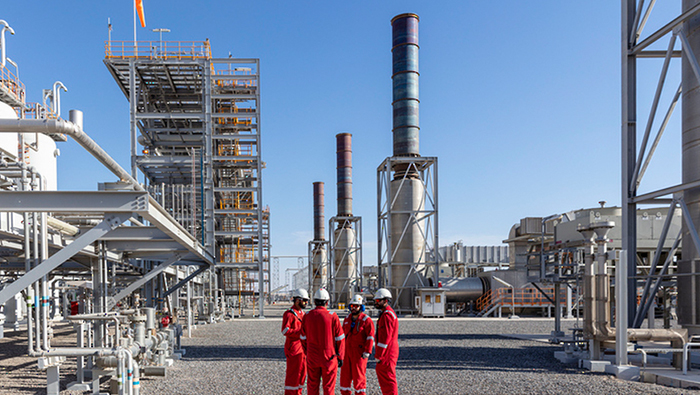

Muscat: Crude oil prices continued to show an upward trajectory after bottoming during the third week of March-2023 following the easing of concerns relating to the banking crisis in the US, according to a new report.
“Prices remained above the $80 per barrel mark during April-2023 after the announcement by Opec+ to implement additional cuts till the end of the year. As a result, the week closed with four consecutive weeks of gains for Brent crude oil futures that reached $86.3 per barrel. The cuts also prompted Asian buyers to snap spot cargoes fearing higher prices in the near term,” the Kuwait-based Kamco Invest said in its latest ‘Oil Market Monthly Report - April-2023’.
The gain at the end of last week came mainly after the International Energy Agency (IEA) said that global oil demand is expected to hit a record high this year led by higher demand from China.
However, the IEA also cautioned, in its latest monthly report, that prices could continue to rise if the cuts are implemented resulting from tighter oil markets during the second half of 2023 amid heightened economic uncertainty.
Meanwhile, oil production in the US remained flattish with a marginal gain of 100,000 seen last week. The trend also highlighted the continuous decline in the oil rig count in the US. The latest weekly data from Baker Hughes showed the oil rig count declining to 588 rigs during the week ended 14 April 2023 after seeing a steep declining trend since November-2022.
A related report from Bloomberg showed that energy firms in the US have told the Federal Reserve Bank of Kansas City that drillers need another 5 per cent increase in WTI crude oil prices or over $86 per barrel to substantially increase drilling and reverse a decline in central US oil field activity.
Average crude oil prices showed declines across the board for the first time in three months. Opec crude basket went below the $80 per barrel mark and averaged at $78.45 per barrel during March-2023 registering a decline of 4.2 per cent. Kuwait crude witnessed a slightly smaller decline of 4 per cent to average at $79.86 per barrel while Brent witnessed a steeper decline of 5.1 per cent to average at $78.3 per barrel.
Consensus expectations for Brent crude oil were lowered as compared to last month, with marginal cuts in estimates for the next four quarters. However, the US EIA raised its forecast for Brent crude grade for this year and 2024. The agency now expects Brent to average at $85.01 per barrel this year against $82.95 per barrel in its previous monthly report while prices for 2024 are forecasted at $81.21 per barrel against $77.57 per barrel in the previous forecast.
Further, a Bloomberg report showed refiners in Japan, China and Thailand were buying spot shipments for June-2023 loading at a brisk pace expecting higher prices in the near term.
Economic signals affecting oil markets remained mixed with global growth now expected to be slower than expected while interest rates may now see a pause led by moderating inflation. The latest minutes from the Fed's last policy meeting highlighted the risks of the banking sector crisis and its impact on the economy and thereby oil demand. The latest inflation data from the US also gave mixed signals with higher core inflation while the year-on-year (y-o-y) headline index declined to the lowest since April-2021.
Nevertheless, the consensus now expects less aggressive interest rate hikes this year and is optimistic that the US would be close to ending its cycle of interest rate hikes and also even begin cuts by the end of the year. Elsewhere, in Europe, an ECB member said the bank is done with most of its interest rate increases.
On the demand front, China remained a bright spot in the oil market with the latest data showing strong demand, although with a caveat. China’s crude oil imports during March-2023 increased by a strong 22.5 per cent y-o-y to reach 12.3 million barrels per day (mb/d) oil equivalent, the highest since June-2020. However, this was mainly due to higher refinery runs targeted at tapping higher demand for the export of refined products which showed an increase during the month. Domestic demand in China remains subdued with the latest inflation report showing prices rising at the slowest pace since September-2021.
Gasoline demand remained strong in the US with consumption rising to the highest level since December-2021 during March-2023. This was mainly led by warmer-than-usual weather that resulted in increasing mobility. A 12% y-o-y decline in pump prices also added to higher consumption, according to Bloomberg.
On the supply side, Opec production showed a marginal decline during March-2023, according to Bloomberg data. Total production reached 29.16 mb/d mainly due to a steep decline in production in Angola and marginal declines in Iraq and Saudi Arabia. These declines were partially offset by higher production mainly in Nigeria. Oil production in the US also showed an increase during the week ended 7-April-2023 with a 100 tb/d increase to reach 12.3 mb/d after remaining flat during the previous week. The flattish trend in US oil production reflected a declining trend in crude oil rig count that went further below the 600 mark during the same week.
World oil demand estimates for 2022 were kept unchanged by Opec at a growth of 2.5 mb/d to reach average demand of 99.6 mb/d during the year, the Kamco Invest report said. However, there were revisions at the country level reflecting available data. Oil demand for the OECD countries during Q4-2022 was lowered by Opec which was fully offset by an upward revision to demand data for non-OECD countries. This included higher demand estimates for Latin America, the Middle East and Russia.
Global liquids production recorded a monthly decline during March-2023 after showing growth during the first two months of the year.
According to preliminary data, global oil supply dropped by 0.2 mb/d to reach an average of 101.9 mb/d. The decline during the month was led by a fall in production in both non-Opec and Opec producers. Non-Opec liquids production (including OPEC NGLs) declined by 0.1 mb/d during March-2023 to an average of 73.2 mb/d mainly led by a fall in production in Russia that more than offset higher output in Other Eurasia and OECD Americas. Opec production also witnessed a similar decline resulting in a market share of 28.8 per cent.